#collaborative software
Explore tagged Tumblr posts
Text
Testing and QA is now open for all verified members of the Praxis Discord server!
If you're interested in helping to test the website and would like to be the first to know about the latest features, join us on Discord and we can get you set up with an account in our new testing environment.
As we're still in the very early stages of testing and QA, please bear in mind that Praxis is not yet intended for serious use outside of testing or research purposes.
Invite link to the Praxis Discord
#open source#praxis#free software#foss#software testing#quality assurance#qa testing#collaborative software
38 notes
·
View notes
Text
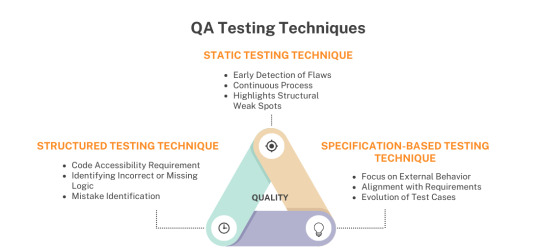
The following is a list of test design techniques and use cases. https://bit.ly/3sAAvfX #softwaretesting #testing #software
0 notes
Photo

How Slack Is Integrating Generative AI After Its Redesign For our series on innovation, Gizmodo spoke to Olivia Grace, senior director of product management at Slack’s headquarters in San Francisco, about recent and upcoming changes to the company’s flagship chat software.Read more... https://gizmodo.com/slack-product-manager-innovation-interview-1850753600
#slack#shipt#groupware#claude#moveworks#verizon#task management software#business process#olivia grace#creatio#collaborative software#technology internet#salesforce#project management software#management cybernetics#workflow#gizmodo#Blake Montgomery#Gizmodo
0 notes
Text
An Interview With a Slack Product Manager About Innovation
For our series on innovation, Gizmodo spoke to Olivia Grace, senior director of product management at Slack’s headquarters in San Francisco, about recent and upcoming changes to the company’s flagship chat software. What Did the Actors Bring to Their Back to the Future: The Musical Performances? Check out the previous Q&As in the series, a conversation with an engineer at the social media…

View On WordPress
#Business process#Claude#Collaborative software#Creatio#Gizmodo#Groupware#Internet#Management cybernetics#Moveworks#Olivia Grace#Project management software#Salesforce#shipt#slack#Task management software#Technology#Verizon#Workflow
0 notes
Text
(regular disclaimer that I will exaggerate big feelings for effect but at the end of the day this is fandom and in the grand scheme of things Just Ain't That Serious good? good)
okok look while I am obviously SOOO into where Arcane went with the Machine/Arcane Herald, I can get why gamers who liked og LoL Viktor would be Big Annoyed at him being totally retconned and overhauled in game. That is undeniably a totally different guy there and yeah it would be shitty to have the guy you like completely swapped out. I can especially get it if they liked the mechanical cyborg engineering aspects of his character!
BU T I keep seeing iterations of "he didn't choose anything for himself he just had things happen to him" or "he just went mystic. he used to be someone who used his genius to remake himself and now he just meditated himself into a wizard" and I am so so down to meet in the pit on those takes!! I get people not liking the less mechanical aspects of him but hhhhhhohmygod do not be taking my guys agency and genius down like that
Yes the initial full fusing with the hexcore is something that happened to him, that someone who loved him maybe too much did to him (almost like Arcane has themes of people being launched down dark paths by things that happen to them beyond their control hMmMmmmmmm!!!) And btw I still hold that while his brain got changed by trauma (bc trauma DOES THAT) and the hexcore helped amplify and empower him leaning into his worst traits, after Jayce forced that initial fusion everything Viktor did was a choice.
But also!! Jayce used Viktor's notes. Viktor was the one who went down and got shimmer, who lied and experimented in secret. He stumbled into noticing the hexcore responding to biological material but then he pursued that avenue (because LIFE is a lot of stumbling into things and then deciding what to do from there), figured out what interdisciplinary collaborations he needed to make, figured out on his FIRST TRY what runes he would need to put where.
And while they don't lean into the mechanical engineering genius as much as the OG Viktor like...guys that's a software engineer with a big scoop of magic theorist on top of it (who then started a pivot into biomechanical arcane theory like THAT). He made a magic AI! Don't go telling me he didn't use his genius to become the Arcane Herald when he made a magic AI and then I got to watch the hexclaw grabbing and programming runes into spells like the coolest shit ever!!
That man figured out how to make Jayce's ideas into reality. He then used the scant knowledge of the arcane that still exists to figure out and recreate, using technology, what mages do by instinct. He made a MAGIC AI HOLY SHIT. Jayce is STILL referencing Viktor's rune theories to figure out the anomaly!!
He did not use the same type of genius to become the same type of Herald, but my guy invented being a technomancer so hard that he turned himself into a magical supercomputer and was so good at THAT that he made himself a robowizard god and I will not be hearing anything belittling how nuts that is!!
#arcane#arcane spoilers#arcane meta#i get being unhappy that they did retcon him so hardcore!! i just! get annoyed at comments acting like he didnt make himself!!#'he had help from singed and jayce' yeah science is at its best when its collaborative!!!!!!#thats how it works!!!!#ok fine if you think he was controlled by the hexcore yeah that ruins any agency but good thing i dont think that!!!#viktor arcane#Viktor meta#he turned himself into a wizard using software engineering and theoretical physics and if you dont think thats the raddest shit#then idk i guess we all have different ways to interpret media but!! i think youre wrong!! so MLEH
140 notes
·
View notes
Text
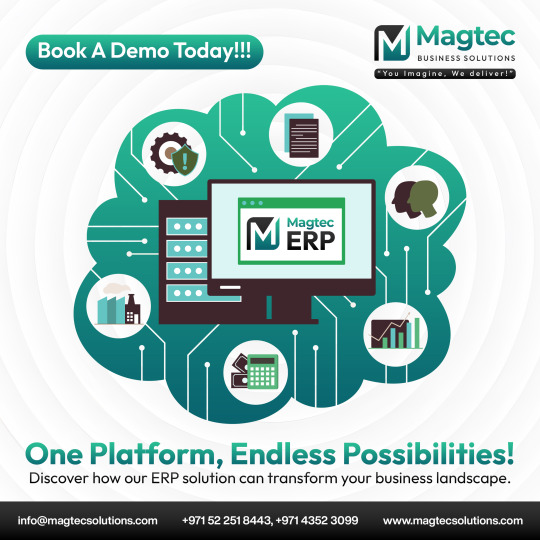
Transform your business with Magtec ERP! 🌐✨ Discover endless possibilities on a single platform. Book a demo today and see how we can elevate your operations to the next level! 🚀📈
#magtec#magtecerp#magtecsolutions#erp#businesssolutions#digitaltransformation#innovation#technology#growth#efficiency#productivity#cloud#automation#management#software#enterprise#success#analytics#customization#scalability#integration#teamwork#collaboration#strategy#data#support#consulting#businessdevelopment#transformation#leadership
2 notes
·
View notes
Text
Why Troop Messenger is the Best Alternative to Discord
In today’s fast-paced world, effective communication and collaboration are essential for teams to succeed. While Discord has gained popularity for casual and gaming communities, many businesses and organizations need a more secure and feature-rich platform. Troop Messenger is the ultimate solution for those looking for a powerful and secure Discord alternatives. Here’s why Troop Messenger stands out as one of the best alternatives to Discord.
Unparalleled Security
One of Troop Messenger’s key strengths is its commitment to security. Unlike Discord, which primarily caters to casual users, Troop Messenger offers enterprise-grade security features like end-to-end encryption, data retention policies, and role-based access control. These ensure that your business communication remains private and protected from unauthorized access.
Versatile Deployment Options
Troop Messenger provides flexibility with its multiple deployment options. Businesses can choose between SaaS (cloud-based), on-premise, or self-hosted setups, unlike Discord, which is solely cloud-based. This flexibility ensures that organizations in sensitive sectors like defense, government, and BFSI (Banking, Financial Services, and Insurance) can maintain full control over their data.
Rich Collaboration Features
Troop Messenger offers a comprehensive suite of collaboration tools that outshine Discord. Features include:
One-on-One and Group Messaging: Send instant messages to individuals or groups with ease.
Audio and Video Calls: Conduct high-quality calls for effective remote communication.
Screen Sharing: Share your screen in real time to enhance collaboration.
File Sharing: Send large files securely and without hassle.
Burnout Chat: A unique feature for self-destructing messages, ensuring sensitive information remains confidential.
Seamless User Experience
While Discord is user-friendly, it often feels cluttered and overwhelming for professional users. Troop Messenger’s intuitive interface is designed specifically for productivity and efficiency. Its clean layout and customizable features make it ideal for teams of all sizes.
Advanced Integration Capabilities
Troop Messenger integrates effortlessly with a wide range of tools and platforms, such as Google Drive, Dropbox, and APIs for custom integrations. This makes it a versatile choice for businesses that rely on multiple tools to streamline their workflows.
Designed for Business Communication
Unlike Discord, which was originally created for gaming communities, Troop Messenger is purpose-built for professional communication. It meets the unique needs of industries such as:
Government Agencies: With its secure on-premise deployment.
BFSI Sector: With robust compliance features and data encryption.
Defense Organizations: Offering secure and private communication channels.
Affordable and Transparent Pricing
Troop Messenger offers competitive and transparent pricing plans that cater to businesses of all sizes. Unlike Discord, which has limitations on premium features, Troop Messenger’s plans include all essential features without hidden costs. The value it provides far outweighs its cost, making it an excellent investment for organizations.
Why Troop Messenger is Better than Discord
If you’re looking for an alternative to Discord, Troop Messenger is the best choice for several reasons:
Enhanced Security: Ideal for businesses that prioritize data privacy.
Professional Features: Tailored for corporate communication, unlike Discord’s gaming-focused features.
Flexible Deployment: Options for SaaS, on-premise, and self-hosted setups.
Scalable: Suitable for teams and organizations of all sizes.
Industry-Specific Use Cases: Perfect for government, defense, NGOs, and private sectors.
Conclusion
While Discord is a popular platform for casual communication, Troop Messenger goes above and beyond to meet the needs of businesses and organizations. Its robust security, advanced features, and professional focus make it the ultimate Discord alternative for teams seeking a secure and reliable collaboration tool. Whether you’re a small business or a large enterprise, Troop Messenger can transform how your team communicates and collaborates, ensuring productivity and success.
If you’re ready to elevate your team’s communication, make the switch to Troop Messenger today!
#alternative#technology#software#collaboration#communicataion#discord alternative#discord alternatives#alternative to discord#alternatives of discord#team collaboration#communation tool
2 notes
·
View notes
Text
Best Communication Platforms to Enhance Collaboration for Businesses
As a business messaging, work chat, and instant messaging solution for both office and remote work, Troop Messenger is regarded as one of the greatest team communication platforms.
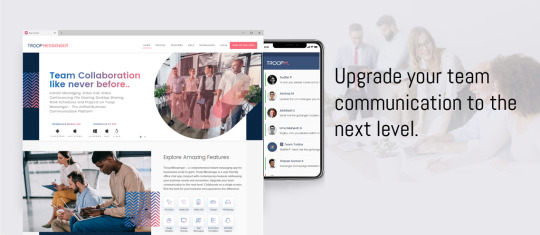
#team communication tools#communication tools#internal communication software#troop messenger#team communication platforms#communication#business#secure communication#chat#messaging app#collaboration tool#office communication
2 notes
·
View notes
Text
DaVinci Resolve 19 Review: AI Tools & Film Looks
Loved our DaVinci Resolve 19 guide? Share your thoughts below! 👇
Navigating the New Frontiers of Video Editing with DaVinci Resolve 19 The world of video editing is always evolving, and DaVinci Resolve stands as a leader in providing unparalleled tools for bringing creative visions to life. The release of DaVinci Resolve 19 Public Beta marks an exciting leap forward, introducing AI-powered features that revolutionize audio design and streamline film look…

View On WordPress
#AI editing#collaboration tools#color grading#DaVinci Resolve 19#film looks#free video editing#public beta#video editing software
3 notes
·
View notes
Text
Cracking the Code: Manifesting Success with AI-Driven Marketing Strategies
As the domain of marketing technology continues to grow at a rapid pace and is driven by growth in artificial intelligence (AI) and personalization, marketers encounter exciting opportunities as well as daunting challenges. Adapting to these changes requires practical approaches that allow organizations to stay current, manage change effectively, and operate at scale.
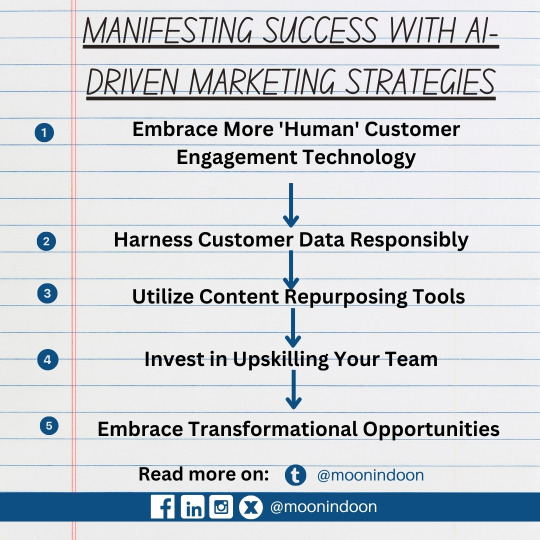
In this article, we explore five practical tactics to help modern marketing teams adapt and thrive in this dynamic environment:
Embrace More 'Human' Customer Engagement Technology:
While chatbots have been around for decades, advancements in AI have significantly enhanced their capabilities. Today, AI-powered chatbots can engage with customers in a remarkably human-like manner, providing round-the-clock support and valuable insights.
Leveraging chatbots not only improves customer experience but also generates valuable data for outbound marketing initiatives. By analyzing customer queries and interactions, marketers can easily get valuable data that can enhance their marketing strategies.
Harness Customer Data Responsibly:
Customers willingly share personal information with companies, providing valuable insights into their preferences, behaviours, and sentiments. Marketers must mine this data responsibly and use it to deliver personalized experiences and targeted offers.
By leveraging predictive analytics and machine learning, marketers can analyze data faster and make informed decisions to enhance omnichannel marketing efforts.
Utilize Content Repurposing Tools:
Authentic content remains paramount in marketing, but creating content for various channels and platforms can be challenging. Content repurposing tools like Optimizely and Interaction Studio help marketers adapt long-form content into social media posts, videos, and other formats.
Expanding your content footprint not only enhances brand visibility but also allows for faster learning and adaptation to changing market dynamics.
Invest in Upskilling Your Team:
While AI-based tools offer significant automation potential, managing and mastering these technologies require skilled professionals. Marketers must invest in continuous learning and cross-functional collaboration to stay ahead.
Effective leadership and teamwork are essential for navigating the complexities of modern marketing. Encouraging knowledge sharing and collaboration across teams fosters a culture of innovation and growth.
Embrace Transformational Opportunities:
As AI continues to reshape the marketing landscape, traditional metrics of success are being redefined. Marketers must embrace the transformative potential of AI and other emerging technologies to serve their customers better.
When evaluating new ideas and technologies, marketers should prioritize customer value and align them with their brand and company values. By focusing on solutions that genuinely benefit customers, marketers can drive meaningful impact and success.
In conclusion, navigating the ever-evolving domain of AI-driven marketing requires a blend of innovative strategies and steadfast principles. By embracing more human-centric engagement technologies, responsibly harnessing customer data, utilizing content repurposing tools, investing in team upskilling, and embracing transformational opportunities, modern marketing teams can position themselves for success. The key lies in adapting to change while remaining true to customer-centric values, fostering collaboration, and prioritizing solutions that genuinely benefit the audience. With these practical tactics in hand, marketers can not only thrive but also lead the way in shaping the future of marketing.
#marketing#AI driven marketing#AI#AI-driven marketing#artificial intelligence#inteligência artificial#ai technology#ai tools#chatgpt#marketing digital#digital marketing#branding#design#human-centric engagement#innovative strategies#customer-centric values#collaboration#content tools#Upskilling#automation#software#networking#innovation#efficiency#iot#'Human' Customer Engagement Technology#user generated content#content marketing#content creation#content creator
4 notes
·
View notes
Link
#social network#social media#microblogging#sharetronix#blogtronix#enterprise microblogging#blogtronix enterprise#social software#enterprise social software#social platform#social productivity business#social software internal#collaboration business#groups business#networking#private#groups#community#software
2 notes
·
View notes
Text

join the praxis discord - mastodon - github
#open source#praxis#free software#typescript#foss#graphql#design#collaborative decision making#tech#technology#nodejs#reactjs
572 notes
·
View notes
Note
What would one need to be able to use Figmin XR?
You would need one of the devices it runs on! Right now you can get Figmin on the:
HoloLens
Quest 2, Pro, & 3
Tilt Five
Magic Leap 1 & 2
Vive XR Elite
We also currently have a beta going for Figmin mobile, which runs on both Android & Apple devices. 👀 It's not an open beta at the moment - but if you're an artist curious about dabbling in the medium, feel free message about joining and I'll see if I can hook you up 👀👀👀👀
#figmin xr#no prior vr experience is required for the mobile beta btw#we really want feedback from people totally new to this type of software#so that it can be as painless to learn as possible even for non-creatives#the mobile app will also be used to publish things to real-world locations!#so you can leave little digital easter eggs all around your city and even collaborate with headset users#sorry i'm rambling i just get really excited every time i think about it ghdkghdk
2 notes
·
View notes
Text
Hi my phd is in Discord (yes really) and can confirm that it’s core functionality is not that of social media (asynchronous feedback for user generated posts giving the illusion of social interaction - Carr & Hayes).
i'll just be controversial and say discord is not real social media. it's fine communication platform but it is not Posting! saying you're gonna move to discord is like saying you're gonna move to facebook messenger get outta here
#it’s actually closer to a collaboration software#the persistence element makes it a bit of a weird crossover between communication and collaboration#plus users are gonna use it how they want. I’ve seen some crazy stuff#the ‘time’ element is also different
53K notes
·
View notes
Text
The Role of Online Collaboration Tools in Remote Work Growth
Troop messenger
Troop Messenger is a frontrunner when it comes to more dynamic team collboration. Because of how easy it is to use in an entrepreneurial setting, it is one of the few online collaboration tools that can meet the needs of any team.
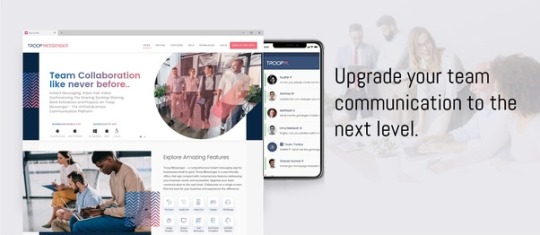
Troop Messenger acts as a complete online collaboration tool and provides you with immediate access to a wide range of features, including:
Instant messaging
Making video calls
Conducting video conferences
Sharing files
Desktop sharing
Creating complex schedules
Efficient Project Management with Troop Messenger Troop Messenger empowers teams to organize and secure project data by offering structured work scheduling. This powerful business collaboration tool enhances communication and streamlines workflows, making it an excellent choice for startups, large corporations, and remote teams alike. Its innovative features and intuitive design establish it as one of the top online collaboration platforms available today.
Key Features of Troop Messenger
Instant Messaging for Real-Time Collaboration Troop Messenger supports seamless communication with real-time messaging, ensuring enhanced efficiency in remote collaboration and online team engagement.
Comprehensive File Sharing Share and manage documents, multimedia, and other files effortlessly to facilitate smooth business collaboration within your team.
High-Quality Audio and Video Calls Conduct virtual meetings with superior audio and video capabilities, bridging communication gaps in remote work environments.
Centralized Collaborative Workspace Serving as a central hub for projects, Troop Messenger stands out as one of the best apps for teamwork and collaboration, helping teams stay organized and aligned.
Advanced Security Features With robust encryption and secure data storage, this collaboration software safeguards your sensitive business information against threats.
Why Troop Messenger is Perfect for Businesses Troop Messenger’s adaptability makes it suitable for teams of all sizes. Its intuitive interface and versatile features set it apart from other collaboration platforms, offering unmatched flexibility for both remote and in-office teams.
Advantages of Troop Messenger
Unified Communication: Minimize email overload by bringing your team onto a single collaboration platform.
Boosted Productivity: Make faster decisions with real-time updates, eliminating delays in project execution.
Enhanced Teamwork: Strengthen team connections through tools like group chats, file sharing, and project tracking.
Budget-Friendly Solution: Access enterprise-grade features without overspending.
Optimized for Remote Collaboration As remote work continues to rise, tools like Troop Messenger have become essential. With advanced features like screen sharing and remote access, it serves as the ultimate online collaboration tool for dispersed teams, ensuring smooth communication and productivity.
Why Troop Messenger Outshines Other Platforms Troop Messenger’s rich feature set and user-friendly design make it an exceptional choice for businesses. Unlike many other tools, it caters specifically to the needs of dynamic and entrepreneurial teams. This makes it one of the most versatile online collaboration tools, suitable for a wide range of industries and work environments.
#online collaboration tools#collaboration tools#web collaboration tools#online collaboration software#best collaboration tools#best collaboration apps#free online collaboration tools#online collaboration#online collaboration tools for small business#digital collaboration tool for instant messaging#internet collaboration software#collaboration platforms#team collaboration tools#remote collaboration tools#team collaboration software#troop messenger#collaboration#communication#team collaboration tool
2 notes
·
View notes
Text
Mediocrity over Innovation: The Canva Dilemma
The bias against Canva users has arisen from concerns that it weakens the integrity of graphic design. However, instead of dividing “real” designers and Canva users, the industry should appreciate the strengths of both traditional expertise and modern accessibility. Canva was not created to replace Adobe but to offer an alternative approach to creativity. Rather than deepening the divide, professionals and Canva users should collaborate to enhance the field of design. The future of graphic design will rely on inclusivity and innovation rather than exclusion.
Canva has transformed the design industry by allowing those with minimal training to create professional-looking content. With an easy-to-use interface and a vast array of templates, it has enabled small businesses, content creators, and students to design materials effortlessly. However, some professional designers argue that this accessibility comes at a cost. Adobe software offers greater customization and precision, allowing for more detailed and original designs. Many experts believe Canva’s reliance on templates leads to generic work that lacks originality and technical skill.
Consequently, some professionals dismiss Canva users as “lesser” designers, seeing their work as uninspired and lacking depth. The debate between traditional and modern design highlights a broader issue of authenticity versus accessibility. Professional designers invest years mastering software like Photoshop, Illustrator, and InDesign, which provide full creative control. Meanwhile, Canva has made visual storytelling available to a broader audience without the need for extensive training. While some believe Canva oversimplifies design, others argue that it empowers those who cannot afford to hire professionals.
Rather than diminishing the field, this shift has expanded the industry by introducing more people to fundamental design principles. It has also increased awareness and appreciation for visual aesthetics. Ultimately, this debate reflects the changing landscape of graphic design. Canvas does not aim to replace professional software but to complement it by serving a different audience. Instead of dismissing Canva users, professional designers could use this as an opportunity to mentor and guide aspiring creatives.
Graphic design continues to evolve, and increased accessibility should be seen as progress rather than a threat. The stigma against Canva users comes from concerns about maintaining design integrity. However, instead of rigidly separating “real” designers from Canva users, the industry should embrace both traditional skills and modern accessibility. Canva is not a replacement for Adobe but an alternative creative tool. Rather than fostering division, designers and Canva users should work together to strengthen the field. The future of graphic design depends on inclusivity and innovation, not exclusion.
#canva app#adobe#graphic design#professional design#creative tools#digital design#creative collaboration#design software#design innovation
1 note
·
View note